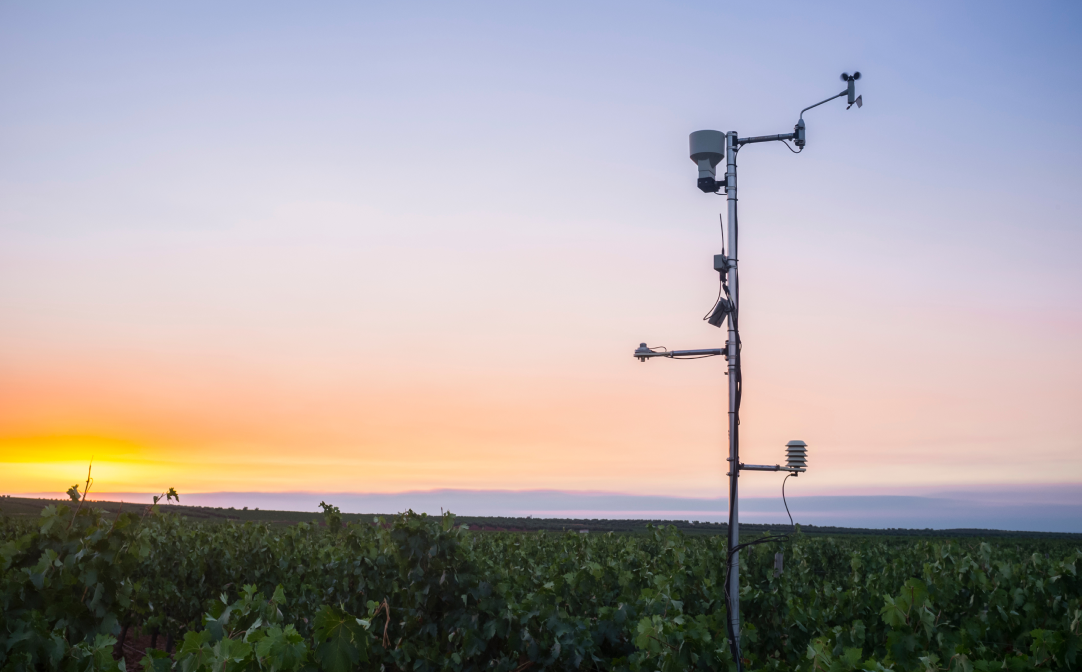A quiet revolution is unfolding in vineyards around the world. High above the vines, drones scan the canopy for signs of stress. On the ground, robots roll between rows, gathering data as they go. Growers, once armed with notebooks and pruning shears, now carry tablets that track everything from soil moisture to ripening patterns.
This is the world of precision viticulture – a modern approach to vineyard management that brings science and data into sharper focus, without losing sight of tradition.
What is precision viticulture?
At its heart, precision viticulture is a response to variability. Even in the most carefully managed sites, no two vines are exactly the same. Subtle differences in soil depth, sunlight exposure or slope angle can have a major impact on vine growth and fruit quality. Rather than applying the same treatment across the entire vineyard, precision viticulture encourages growers to tailor their decisions to the specific needs of each area.
This doesn’t mean turning the vineyard into a laboratory. It means observing variation more closely – and acting accordingly. Whether it's adjusting the irrigation schedule for a dry corner of the block or harvesting one section a few days earlier than the rest, the aim is to make more targeted, timely interventions that support vine health and wine quality.
How vineyards are using tech to tune in
Precision viticulture draws on a wide range of technologies. Used carefully and in context, they can help growers monitor, interpret and respond to vineyard conditions with far greater accuracy than was possible even a decade ago.
Mapping the vineyard from above
Drones and satellite imaging are now being used to create detailed aerial maps of vineyard canopies. One common method, NDVI (normalised difference vegetation index), highlights differences in plant vigour across the site. Areas of low vigour might point to issues with soil, pests or disease, while vigorous growth may indicate excess water or nutrients. These insights help growers prioritise where to intervene and where to hold back.
Monitoring the soil beneath the surface
Beneath the surface, soil sensors measure water availability at different depths. This is especially useful in dry regions or where soils vary across a single site. By understanding how water is retained and used, growers can fine-tune irrigation and avoid both drought stress and wasteful overwatering.
On-site weather stations
Instead of relying on regional forecasts, growers are installing their own mini weather stations. These devices track temperature, humidity, rainfall and wind on a micro scale, often down to specific vine blocks. This data can influence decisions around spraying, frost protection or even the timing of vineyard work.
Robots in the vines
One of the most attention-grabbing developments in vineyard technology is the arrival of robotic tractors and autonomous vehicles. These machines are designed to navigate vine rows independently, using GPS, cameras and sensors to avoid obstacles and stay on track. Once programmed, they can carry out labour-intensive tasks such as mowing, spraying or even leaf removal, all without a driver on board.
Beyond automation, many vineyard machines are now equipped to collect data while they work. Cameras and onboard sensors can detect differences in canopy density or berry development, providing growers with valuable insight into vine health and ripening progress. Some machines can even adapt in real time by adjusting their actions based on what they detect.
Together, these smart machines help create a more connected vineyard. The data they gather is often fed into digital platforms alongside information from drones, soil sensors and weather stations. Over time, this builds a detailed picture of how each area of the vineyard performs, helping growers make informed decisions both in the short term and over the long run.

An on-site weather station
From insight to action
The practical outcomes of precision viticulture vary depending on the site, the grower and their goals. For some, it’s about improving fruit consistency. For others, it’s about reducing chemical inputs or responding to climate-related stress. Common applications include:
- Splitting a block into smaller harvest zones based on ripening patterns
- Modifying pruning to reflect vine vigour
- Applying compost or fertiliser only where needed
- Adjusting canopy management for better airflow or sun exposure
These changes may seem small, but together they can lead to stronger vine balance, better fruit quality and more sustainable use of resources.
A question of scale and style
Precision viticulture is more widely adopted in large-scale vineyards, where the cost of technology is easier to justify and where natural variability is often greater. It also tends to appeal to producers who value data-driven decision-making, especially in regions facing water scarcity or labour shortages.
That said, not every grower is convinced. In many smaller or biodynamic vineyards, observation and intuition still lead the way. These producers often argue that walking the rows and building a relationship with the site gives them a different kind of insight – one rooted in experience, not sensors. And in some of the world’s most celebrated wine regions, the use of high-tech tools is still relatively rare.
Looking ahead
Whether you see it as a new frontier or simply another tool in the kit, precision viticulture reflects a shift in mindset. It’s not just about adopting new technology – it’s about deepening the connection between the vineyard and the decisions made within it.
The concept sits at the intersection of tradition, science and sustainability. It encourages growers to notice more, to question assumptions, and to make choices that reflect the unique character of their site.
That, perhaps, is what makes it so exciting.


